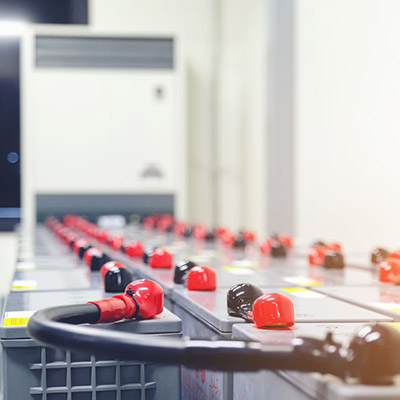How to Select and Buy UPS (Part I)
UPS is an acronym for "Uninterruptible Power Supply". It is composed of three parts: control circuit, battery pack, and inverter. UPS can charge its battery pack through power grid (mains), so when power grid has power problem, UPS can release power loads to connected equipment for use.
It’s commonly though UPS can only provide load power when there is a power outage. In fact, that is not the only function in UPS. In addition to transiently providing load power, UPS also features voltage stabilization, filtering, surge and noise prevention, etc. It can provide pure power for high-end audiovisual equipment while ensuring the normal operation of computer reading and writing data. This will reduce equipment failures and data loss at the consumer’s end.
With the popularization of UPS, it has been fully used in all walks of life and under various environments. The characteristics of UPS in different application fields are introduced below:
Home Use:
Most people lack the concept of protecting information and communication Technology Equipment (ICT) through UPS and often neglect power problems (power outages, instantaneous power interruptions, abnormal over/under-voltage, instantaneous frequency changes, etc.). This is a potential crisis for ICT equipment. In mild conditions, equipment anomaly or crash may occur; in serious conditions, permanent equipment damage may result. Equipment purchase costs are less of a problem; Failing to save the stored files in the equipment is frustrating. The concept of UPS use is like purchasing insurance. With this insurance, there is no longer a need to worry about causing harm to ICT equipment due to power problems.
Generally speaking, the first factor to consider when purchasing a UPS is power capacity. The first thing to do is to evaluate which equipment are going to connect with UPS. For instance, if a personal computer has a built-in 750W power supply, a 27-inch screen has a built-in 150W adaptor, a multi-tasking printer has a 90W adaptor, a wireless router has a 20W adaptor, and a NAS Ethan has a 90W adaptor, the total load of this configuration is about 1100W. Then, the choice of UPS will be based on the budget. An offline UPS power factor is about 0.6. With this configuration, a product with a rating of at least 1,100W/0.6=1833VA should be purchased; the line interactive power factor is about 0.7, a product that is larger than 1,100W/0.7=1571VA should be purchased; an online power factor is about 0.9, a product that is larger than 1,100W/0.9=1,222VA should be purchased. We usually purchase a UPS with higher capacity in exchange for longer power supply time. Selecting a UPS with more than double the required load capacity will not only achieve longer run time during power outage, but will also serve as an expansion capacity when supplementing ICT equipment in the future.
A full range of FSP models for home applications including Nano, NanoFit series. If you have high-end audiovisual equipment at home, it is recommended to use line interactive UPS such as Eco, FP, and iFP series, etc. the voltage stabilization can keep the quality of your user experience. Connecting UPS with personal computers, small routers, NAS, small regional network equipment, workstations will ensure cloud data access without interruption. Connecting the security and monitoring systems to UPS will also aid in maintaining the home environment without security breaches due to power interruptions.
Server Computer Room and Data Center:
The computer room is the most important place for processing digital data and storage systems. The network equipment, information equipment, air-conditioning equipment, monitoring equipment, power generation system, and UPS system in the computer room all require a stable power supply, so as to maintain 24-hour normal operations without interruptions. It is especially so during UPS planning that has no room for negligence.
The power requirements of computer rooms vary greatly depending on their size, ranging from several thousand to tens of thousands of watts. For example, a small computer room equipped with three network cabinets that consume 3,000W, one network wiring cabinet that consumes 1,000W, and ten server cabinets that consume 50,000W. All these requirements need 54,000W power in total. If an online UPS with a power factor of 0.9 is selected, a product with 54,000/0.9=60,000VA is needed. In order to entertain the possibility of computer room expansion, it is recommended that a modular model that can be expanded in parallel be selected to achieve N+X backup results.
FSP Group has launched UPS for computer room environments, including Custos 9X+, Eufo, EPOS, Mplus series, etc. The Mplus modular model features hot-swap repair without affecting continuous power supply by other UPS. The equipment size can be planned and expanded at any time to suit actual needs, thereby fully using the computer room space. It also has the advantage of achieving high conversion efficiency to save wasted power and remote monitoring of the UPS’s operational status. As for the online UPS, in addition to providing you with stable and uninterruptible pure power, 50/60 Hz output power is accurately provided targeting precision equipment. Additionally, power can be supplied based on the priority of important equipment. It is your best choice for planning computer rooms and data centers.
Medical Institutions:
Compared to business and industrial fields, medical institutions have more stringent requirement standards for UPS. Regardless of the size of a medical institution, stable and pure currents are needed at all times to ensure the accuracy of all diagnostic results and safeguard the safety and lives of patients. Patients’ clinic consultation data and medical records are important diagnostic data for medical institutions. Related routers, servers, storage equipment, etc. must come with high-standard UPS.
When various power supply problems occur, depending on the importance, hospitals have sockets in three colors. Other than regular white sockets, red sockets will have power interruptions for seconds during a power outage and wait for power to be supplied by a generator. Black sockets are of the greatest importance. They have to be connected to the UPS at all times, such as those in operating rooms, emergency rooms, intensive care units, patient life support equipment, etc. According to the differed sizes of medical institutions, UPS lower than 120KVA is suitable for hospital data centers, 120~400KVA is suitable for building-related firefighting and surveillance equipment. Single-phase UPS can provide longer backup time and is thus suitable for use on medical devices.
In order to maintain the smooth operation of all the areas of a hospital, without interruptions, the online UPS can provide a power source of the highest quality. Additionally, targeting instruments that vary in importance, different power requirement arrangements are made. The hot-swap function can enable UPS to support each other in supplying power. The high conversion efficiency can bring out the highest efficiency of every kilowatt, making the hospital the most reassuring treatment site for patients.
UPS applications are ubiquitous. In the succeeding part, how other application fields choose UPS will be introduced.
Learn more about FSP, an AC/DC power supply manufacturer
관련 기사
FSP소개
세계 최고의 전원공급장치 제조업체인 FSP그룹은 1993년 설립 이래 '서비스, 전문, 혁신'이라는 경영 철학을 바탕으로 포괄적인 그린 에너지 솔루션 제품을 공급하고 있습니다.







